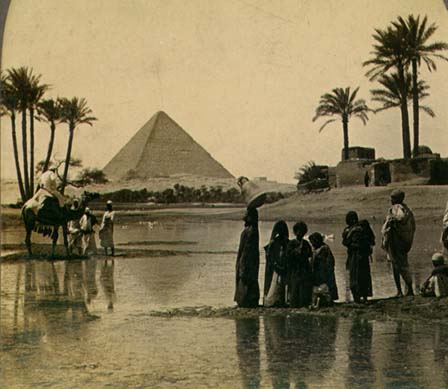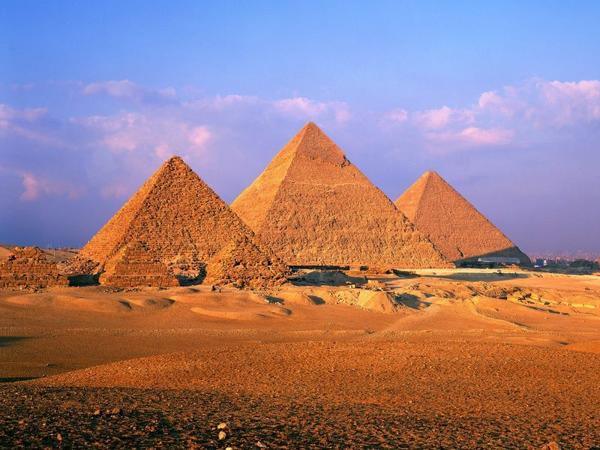









The Great Pyramid of Giza is the only one of the Seven Wonders of the Ancient World that survives
considerably complete.
It is believed the pyramid was built as a tomb for fourth dynasty
Egyptian King Khufu
and constructed
over a 20 year period concluding around 2560 B.C.
The pyramid lies in the center of gravity of the continents in the exact center of all the land area
of the world, dividing the earth's land mass into approximately equal quartes.
A total of over 2,300,000 blocks of limestone and granite were used in its construction with the average block
weighing 2.5 tons and none weighing less than 2 tons.
The large blocks used in the ceiling of the King's Chamber is about 9 tons.
The estimated total weight of the structure is 6.5 million tons.
The Great Pyramid was the tallest man made structure in the world for over 3,800 years.

